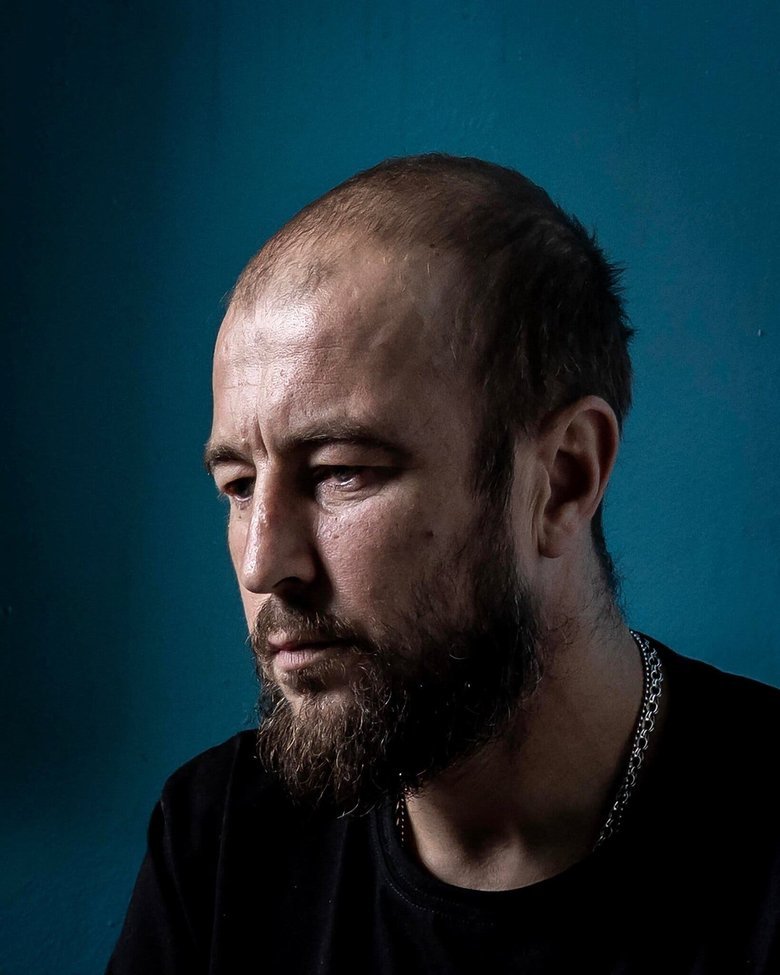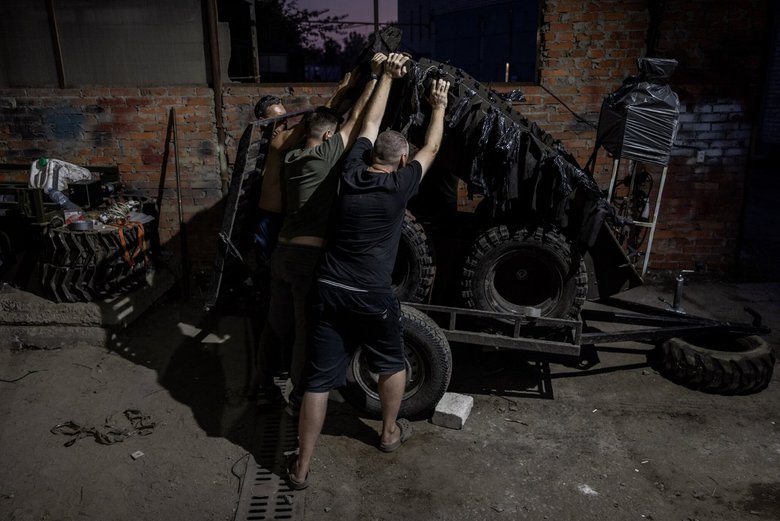Evacuation of wounded using ground-based robotic complex: story of soldier from "Khartiia"
Drone Industry
The New York Times published a story about the evacuation of wounded defenders using a ground-based robotic complex.
This is reported in an article in The New York Times, according to Censor.NET.
Soldier of the 13th Brigade of the NGU "Khartiia" Oleksandr
Together with three comrades, he was carrying out a mission at night in the grey zone near the village of Lyptsi in the Kharkiv region. They were supposed to stretch a wire to knock Russian soldiers off the motorcycles they were using to carry out assaults. Oleksandr's group was 300 metres away from the nearest forest.
A Russian drone dropped ammunition near Oleksandr, injuring him. However, immediately after the explosion, the pilot of the enemy drone began attacking his comrades, mistakenly believing that Oleksandr was dead.
Shrapnel damaged the National Guard soldier's leg, and when the drone's buzzing subsided, he applied a tourniquet in the dark and realised that the bones in his leg were shattered. Oleksandr called out to his comrades, but no one responded.
At that moment, the soldier realised that in three hours the sun would rise and even more Russian drones would take to the sky, find him and kill him. According to the National Guard soldier, he even thought that he might need a hunting knife to cut off his injured leg if it got caught on something and he couldn't move any further.
For a long time, Oleksandr have been crawling through the grey zone, and at any moment a Russian drone could attack him again.
Evacuation problems
For more than half a century, Western military doctrine has stated that seriously wounded soldiers must receive medical care within the first hour after being wounded. However, this is not working now. Ukrainian defenders have to wait several days for evacuation. This is because enemy drones attack both the wounded and medics.
"Evacuation teams are big priority targets for Russia," says Senior Lieutenant Daria, an anaesthesiologist at a stabilisation point.
The inability to evacuate quickly leads to some of the wounded dying in the trenches. Others arrive at stabilisation points with limbs that need to be amputated, which could have been saved with faster access to medical care.
The NYT notes that the front line is saturated with drones, so medical evacuation practices need to be updated.
Example of "Khartiia"
The publication writes that in 2024, the 13th Brigade of the NGU "Khartiia" began experimenting with the use of ground drones on the front lines. They even created a company of ground drones, which began, in particular, to evacuate the wounded and dead.
Every time Oleksandr heard the sound of a drone flying nearby, he hid under his poncho. Mortar strikes could be heard in the distance.
Rescue
Halfway to his shelter, he felt exhausted and lonely. At that moment, he was spotted by "Khartiia" drone pilots with the call signs Kasper and Aferyst.
Aferyst, who was piloting a Matrice 4T quadcopter with a thermal imager, saw the explosion that wounded Oleksandr and other explosions as the drone pursued his comrades, who managed to escape. He saw Oleksandr start to move and reported this to the command post.
Kasper was working with a Mavic quadcopter equipped with a small loudspeaker. Aferyst recorded an audio message in the app and shared the file with Kasper, who uploaded it to his drone.
Oleksandr noticed that he had been wounded in his right wrist. Then he saw a backpack near the forest that one of his comrades had dropped. Inside, he found water, which gave him strength.
Then he heard the sound of a drone and hid. The "Bird" hovered and illuminated him. Oleksandr thought he was going to die, but then he heard a voice in Ukrainian saying, "Shatay (Oleksandr's call sign — Ed.), crawl to shelter in the direction of the light."
At dawn, a Russian FPV drone tried to attack him, but Oleksandr was lucky: it exploded 10 metres away from him. After that, the soldier rushed into the forest, but the Russians tried to attack him with another drone. Aferyst prevented this by trying to shoot down the enemy "bird" with his drone.
Oleksandr reached a fake machine-gun position, where he was found by two Ukrainian soldiers who helped him get to the dugout.
In the dugout, the medic gave Oleksandr painkillers, antibiotics and anti-inflammatory drugs, removed the tourniquet, washed the wound, applied a splint and assured the wounded soldier that his leg could be saved.
Evacuation
A few kilometres away, a company of ground-based "Khartiia" UAVs were stationed in a building. The commander’s call sign was Mathematician.
Oleksandr had to wait three days for evacuation because the ground drone could get stuck after the rains. Eventually, the commander approved his evacuation using the "Zmii-500" ground-based robotic complex.
The GRC is equipped with radio communication, so the pilot team can talk to the wounded during evacuation. The maximum speed of the GRC is 24 km/h. However, due to their compact size and low speed, they are more difficult to spot from the air, according to the military.
As soon as darkness fell, "Zmii" set off, accompanied by other drones. After a while, he reached the dugout where Oleksandr was located.
His comrades helped him get settled on the GRC. "Zmii" successfully delivered Oleksandr. A few minutes later, at the stabilisation point, the surgical team examined their patient. Almost 99 hours passed since he had been wounded.
"Both thighs were riddled with holes and foreign objects. There was a similar small wound on his right arm. His left leg was inflamed due to a secondary infection. A haemoglobin test showed that he was anaemic due to blood loss. ... His condition is stable. The prognosis was favourable. He survived," the publication describes Oleksandr's injuries.
That day, he called his mother from the hospital in Kharkiv and told her part of the truth. He said he had broken his leg. The next day, she came to the hospital and saw his condition.
"I promised you I would stay alive. And I did," said Oleksandr.
Watch the video of the evacuation on Censor.NET.






